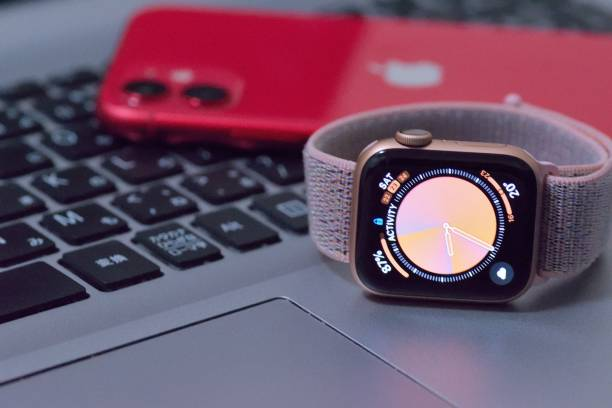
When considering the purchase of an Apple Watch, one crucial decision you’ll face is choosing between the GPS-only and Cellular models. Understanding the distinction could help tailor the smartwatch experience to fit your lifestyle. The main difference lies in connectivity: GPS-only watches require an iPhone nearby for full functionality, while Cellular models boast independent communication capabilities.
Overview of Apple Watch Variants
Apple Watches have evolved through series, with each iteration introducing new features and improvements. Currently, the Apple Watch is available in various iterations, including the Apple Watch Series 3, Series 7, and the latest Apple Watch Series 9. Although the Series 3 is the oldest among these, it still presents a robust set of functionalities for everyday users. Yet, it only comes in a GPS version, reflecting the technical and feature limitations of its generation.
As for the more recent models, such as the Series 7 and Series 9, users can choose between GPS-only and Cellular + GPS models, enabling consumers to select a watch aligned with their connectivity needs. Apple Watches with cellular capability offer the freedom to stay connected even without their iPhone nearby. This is made possible through embedded SIMs (eSIMs) that latch onto cellular networks, thus enabling communication and data usage directly from the watch.

GPS-Only Apple Watch: Features and Benefits
The GPS-only versions of Apple Watches connect to global satellite networks to provide precise location services. They track your movements during outdoor activities like running or cycling, giving you detailed metrics of your workouts. However, for functionalities like texting, calling, or using internet-dependent apps, a GPS-only Apple Watch relies on a paired iPhone’s connection.
Opting for a GPS-only variant has certain advantages. First and foremost, the cost – both upfront and ongoing. Since GPS-only models do not need a separate cellular plan to operate, users save on monthly data plan fees. These watches are often favored by individuals who are almost always within the vicinity of their iPhones, leaving little need for standalone cellular services.
Here are some scenarios where a GPS-only Apple Watch is perfectly adequate:
- When using the watch primarily for fitness tracking.
- If the user is always carrying their iPhone with them.
Cellular + GPS Apple Watch: Features and Enhancements
On the other hand, Apple Watches with cellular connectivity expand on the features of the GPS versions. With cellular models, you can make calls, send texts, stream music, and even seek assistance with Emergency SOS without your iPhone. This level of independence is crucial for people who often find themselves away from their phones but still wish to remain reachable.
Having a cellular plan paired with your Apple Watch is thus quintessential for utilizing the cellular capability. Although it incurs an additional cost, users benefit from the convenience of uninterrupted connectivity. You will also have the peace of mind that comes with knowing you’re just a wrist-lift away from securing help or reaching out to loved ones, should the need arise.
Additionally, Apple has partnerships with various carriers, so setting up cellular service on your Apple Watch is typically a streamlined process. However, this also means the availability of cellular services on your Apple Watch is subject to your carrier’s network coverage and plan offerings.
Comparing Connectivity: GPS vs. Cellular
To illustrate the connectivity differences between GPS-only and Cellular Apple Watches, here’s a table summarizing their capabilities:
| Feature | GPS-only Apple Watch | Cellular + GPS Apple Watch |
|---|---|---|
| Standalone Calling | Not supported | Supported |
| Standalone Texting | Not supported | Supported |
| Use with an iPhone Nearby | Required for all connectivity | Not necessary |
| Emergency SOS | iPhone needed | Directly from watch |
| Streaming Music | iPhone needed | Supported directly on watch |
| Data Plans | Not applicable | Required |

Analyzing Battery Life and Performance
Another aspect to consider when picking between the two types is the battery life. Generally, using the cellular feature consumes more battery power. Therefore, if you use the cellular services frequently on an Apple Watch, you may need to charge it more often compared to sticking to GPS-only functions which could also prolong your device’s daily life-span.
Apple prudently engineers its devices to optimize battery usage, and Apple Watches are no exception. The latest models like the Apple Watch Series 7 and Series 9 come with batteries designed to handle the extra load that cellular connectivity demands. However, users should still make their choice with the understanding that activating cellular functions will potentially reduce the duration between charges. To maintain peak performance without constant recharging, it could be prudent to use cellular capabilities sparingly or only when necessary.
Cost Implications
The decision between GPS-only and Cellular Apple Watches also comes down to price. Naturally, Cellular models carry a higher price tag due to their added capabilities. Here’s what you should consider when evaluating the cost:
- The initial purchase price of the watch, where Cellular models are more expensive.
- Monthly service fees for cellular plans, which can add significantly to the overall cost over time.
For some, the convenience of a Cellular Apple Watch validates the extra expense. You have the flexibility to stay connected even when you’ve left your phone behind – during a workout, at the beach, or in scenarios where carrying a phone is cumbersome or risky. However, it’s worth noting that not everyone needs such accessibility, and for them, the GPS-only variant is a more economical choice.
For budget-conscious consumers, a GPS-only Apple Watch can provide most of the benefits at a fraction of the cost. In contrast, those who prefer the peace of mind that comes with ubiquitous connectivity might find the Cellular model to be a worthwhile investment.
Who Should Choose Which Model?
Deciding between the GPS-only and Cellular Apple Watch variants largely depends on your lifestyle and how you plan to use the device. Here are some guidelines to help you choose:
- If you are rarely without your iPhone, save money with a GPS-only Apple Watch.
- If you want to remain reachable or stream music without your iPhone, consider a Cellular model.
For example, avid runners or cyclists who wish to track their routes but do not want to carry their phones may find the cellular capabilities particularly beneficial. Meanwhile, individuals who work in environments where phones are not allowed but still require a line of communication will also appreciate the independence of a Cellular Apple Watch.
However, if you’re someone who works from home, stays mostly in areas with Wi-Fi, or simply doesn’t mind keeping their iPhone around, a GPS-only version will likely suffice. It’s important to assess your daily routines and situations where you’d potentially use your Apple Watch to determine which features are non-negotiable.

Conclusion
In sum, the choice between GPS-only and Cellular Apple Watches should be dictated by your specific needs, lifestyle, and budget. GPS-only models are more than capable for those who are always within reach of their iPhones and who prioritize cost savings. In contrast, Cellular versions offer unparalleled convenience and autonomy for users who need connectivity on the go, even if it comes at a higher initial and ongoing cost.
Ultimately, your decision should align with how you live your life and how you intend to use your Apple Watch. Whether you opt for the independence provided by a Cellular model or the cost-efficiency of a GPS-only variant, both choices support the vast ecosystem of Apple devices and services designed to keep you connected, active, and engaged.
FAQ
Q: Can I upgrade my GPS-only Apple Watch to a Cellular model later on?
A: No, you cannot upgrade a GPS-only Apple Watch to a Cellular model. The cellular capability is built into the hardware of the watch itself, so you would need to purchase a new Apple Watch that supports cellular connectivity.
Q: Do I have to use the cellular feature all the time if I have a Cellular Apple Watch?
A: No, you can choose when to use the cellular feature on your Cellular Apple Watch. You can manage cellular connectivity in the watch’s settings, opting to use it only when needed to conserve battery life or when your iPhone is not within range.
Q: Is the cellular feature on Apple Watch supported by all cellular carriers?
A: Cellular service for the Apple Watch is not supported by all carriers, and availability may vary based on your region. You should check with your preferred carrier to see if they offer service plans for the Apple Watch.
Q: Can I use my Apple Watch Cellular model internationally?
A: While the Apple Watch Cellular model can connect to various cellular networks, international use depends on your carrier’s roaming agreements and the eSIM policies in the country you’re visiting. Always verify with your carrier before traveling.
Q: If I choose a Cellular Apple Watch, do I need a separate phone number for it?
A: No, you typically do not need a separate phone number for your Cellular Apple Watch. Most carriers offering plans for the Apple Watch share your iPhone’s number and use an eSIM that mirrors your phone’s capabilities on your watch.




